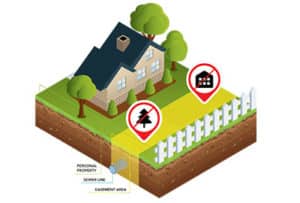





A link to download your FREE brochure will be in your inbox in 3 minutes



















The final price may vary based on project specifics.
To get a free accurate quote tailored to your needs, book a consultation with us today!

The price per square foot provided is an average and may vary depending on project-specific details such as materials, location, complexity, and other factors. Actual costs may differ from the average provided.
It is recommended to obtain a detailed quote based on the specific requirements of your project.

Please note that the monthly payment displayed on this page is an estimate and is subject to variation based on the selected loan product, applicants credit score, loan amount, and other financial details. Actual monthly payment may differ from the estimate provided.
It is recommended to seek advice from a financial advisor or loan officer to obtain precise payment information tailored to individual circumstances.
 Your Trusted
Local Contractor
Your Trusted
Local Contractor
Perhaps every property owner who has ever considered building an ADU has heard about ADU regulations. When you construct an accessory dwelling unit on your lot, you need to ensure the ADU’s layout, design, and location comply with local ordinances and zoning laws.
An ADU is a small residential unit that is secondary to the main house. Homeowners must build it within their existing private property lot, following rules such as setback requirements, size and height requirements, site limitations, and easements.
If you want to know what an easement is and how it influences the ADU construction process, read this article further!
An easement is the legal right of another person or people to pass through your land for some purpose.
For example, if your neighbors own property with a specific location that is only reachable through your property. Or, if they have to go to places of public access and the path lays through your land. For instance, if they go to a beach. Another typical example is when something akin to water pipes, telephone lines, or power lines breaks, an easement allows utility service workers to enter your property without special permission (utility easements).
Easements can restrict the area where you can build your ADU or influence the choice of ADU layout and design. In addition, they may affect the property’s value. Anyway, if an easement causes trouble for using private property, the property owner may try to terminate it.
Typically, a preliminary title report conducted before a property transaction can help you find out whether your property has any easements. It provides a deeper look into information about your lot ownership and contributes to the disclosure of encumbrances on the property.
However, even if your property has an easement, you can still, in most cases, build an ADU when there’s enough space outside it. Also, there are several other considerations worth mentioning:
Summing up, if your property has an easement on it, it sometimes makes ADU construction difficult or even impossible. Nevertheless, if you apply to a professional ADU building company, in many cases, it can help you find a solution.
There are plenty of easement variations aimed at describing specific rights of access to property that a party doesn’t own. The common types of easements encompass the following:
Access easement gives people in question the right to pass through your land to achieve their plot or some place of public access. For instance, they can use a portion of your lot to reach a community road. If you block access to the driveway by your ADU, it will impair this person’s legal right to enjoy it.
A utility easement is the right to enter and pass through private property to install, maintain, or fix utility lines. Utility service workers can repair the sewer system, electrical lines, telephone lines, internet connections, and so on. For instance, if a utility company has to have unobstructed access to underground lines or a sewer, you can’t build an ADU in this area or place any items.
Prescriptive easements arise when someone uses another person’s property without permission for a specific time established by the law. Let’s say your neighbor has been using a portion of your land to access their piece of land by using the shortest route for ten years. They didn’t ask the owner, but the owner didn’t protest. So they can gain the legal right to continue doing so according to easement laws.
These easements help to protect the natural environment. If your land has something of ecological importance, like a wildlife habitat, an easement can prevent you from landscaping or building on its specified part.
Various types of easements permit travel across a property for purposes of convenience or stemming from long-term unauthorized use, for installing utilities, and to preserve ecological elements by limiting specific land actions.
Along with the easements mentioned above, it’s necessary to draw a line between two different easement categories:
It is an entitlement that favors a person, not a property. This easement links to a specific individual who has an agreement with the property owner to limit property use. It’s not transferable. Imagine that your neighbor obtained an easement to cross your land to access the park. However, other neighbors, as well as future owners of their property, will not be able to do the same.
It is an entitlement attached to the specific land. To illustrate it, imagine the owners of the neighboring plot have an easement to traverse your land to get to a nearby river for fishing. Should the owner of their plot choose to sell the land, the easement for accessing the river would transfer along with the property to the new owner.
Easements come in two subcategories based on how the parties make them:
If parties sign a paper or make any other sort of written agreement registered by local authorities, the easement is expressed.
If you have no written documents, but the circumstances or previous actions assume the existence of an easement, it’s an implied easement. For example, if the landowner has allowed their neighbor to use a portion of their land to get to the driveway for a continuous period of time, we can talk about this type of easement.

If your property has an easement burden and causes you inconveniences during ADU construction, you may try to terminate the easement.
To cancel a right to use your property without your consent, you can follow these steps:
To sum up, the cancellation of an easement requires mutual agreement and documentation. If the party benefiting from the easement does not agree to cooperate, the party wanting to end it will need to start a legal action on the basis of the limited use of their property and the inability to use it as desired.
There are several ways to terminate an easement, including the following ones:
If the parties demonstrate mutual consent on easement revocation, you merely need to outline it in a document and sign it.
When the benefiting party shows an intention to waive their rights or already doesn’t use them, you should provide unambiguous evidence of abandonment.
If you’re a property owner with an easement on your plot, and you acquire the property that’s benefiting from the easement, you combine both properties into one ownership. After this, there’s no point in easement, so it ceases.
If the easement was a result of some necessity that no longer exists, the corresponding easement terminates automatically.
If only the property owner uses their land visibly, exclusively, and without interruption, they can cancel out easement rights. In California, the time required is usually five years.
Looking a bit further into the right to use another’s property, we can find not only negative aspects but also positive ones. Sure, the presence of easements on the property may deter you from choosing a particular ADU structure and design. But remember that easements exist for a reason.
Easement advantages might include such things as:
All in all, there are different perspectives from which you can look at the property easement. If it occupies an area only suitable for an ADU, there may be a possibility of ceasing it.
If there is enough space outside the easement, it will be wise to build around it. Building around the easement area allows the property owner to avoid the burdensome easement revocation process. However, ensure you maintain the required distance specified by the easement. It may require changes to the ADU plan or a more complex solution.
In California, easements grant the right to use another person’s property without an ownership right. This right can influence a property’s usage as well as the place available for an ADU building. Keep in mind that, in specific cases, it’s possible to terminate an easement.
Utility easements are usually 10 to 20 ft. wide along the boundaries of the site. Yet, the specific width can vary depending on conditions like utility type, city rules, or considerations unique to the property. So, if there’s an easement on your property, make sure to consult the local authorities.
In some communities, it’s possible that you and your neighbors only have one driveway. Thus, they can access it by using a portion of your property. In this case, entry or exit takes place in specially designated areas on the territory of your plot. You can build an ADU so that these areas do not get blocked.
Get a First Look at Real ADU Projects